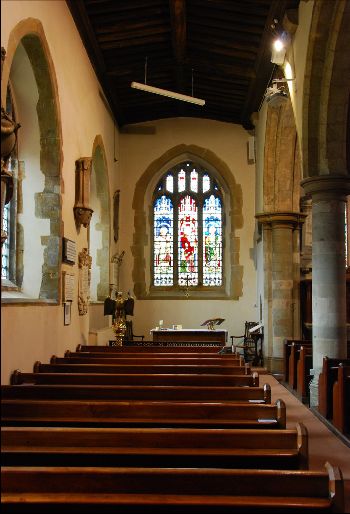Tonbridge Parish History
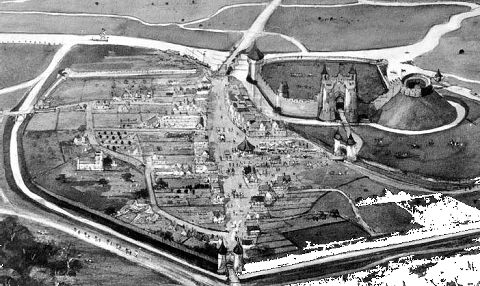 Tonbridge as it may have looked in the 1200s. The church of St Peter & St Paul can be seen on the left, just outside the wall.
Tonbridge as it may have looked in the 1200s. The church of St Peter & St Paul can be seen on the left, just outside the wall.
By J.F. Wadmore, 1886. Tonbridge Historical Society
The Saxons
In the Saxon language 'Ton' means Ten, and it is believed that the Saxons originally settled ten families in what was to become Tonbridge. Tonbridge was an obvious place to settle; as well as extensive forests there was the River Medway, which provided a trade route and access to London. Tonbridge is a natural crossing point where the river narrows and there is evidence that the Romans used this crossing for their Wealden iron industry.
Tonbridge was also close to Canterbury, which in the 6th Century was the first place in Kent to have a Christian church. Canterbury has remained the centre of the Anglican Church which is led by the Archbishop of Canterbury. The earliest Canterbury Cathedral was built in 597 by Augustin-ian monks, who preached all over Kent.
However, it was not until 668 that the authority of Canterbury was firmly established and the idea of uniting Christians into one Anglo-Saxon Church began to take shape. Archbishop Theodore increased the number of Bishops and began subdivid-ing the country to ensure spiritual support for communities. At this time the division was through the nobility, who were persuaded to have a church and Christian teacher on their estate, but from this grew the Parish system that we know today.
By Archbishop Theodore's death, nine monasteries had been founded across the country, including Canterbury and Rochester. Tonbridge is today in the diocese of Rochester, which is the second oldest bishopric in England. This means we are one of many parishes which are overseen and spiritually supported by the Bishop of Rochester.
It has been estimated that by 1042 there were 400 Saxon churches in Kent alone. It is probable that our present church building stands on the site of a Saxon preaching place, which would have been marked by a wooden cross. Monks from nearby monas-teries would have visited to care for the spiritual needs of the Saxons who settled here. It is thought that there was a Saxon chapel here before 1066, and you can see some Saxon brickwork on the outside north wall of the chancel.
The Normans
Tonbridge held such a strategic position that it was quickly seized by the Normans. The Castle was built by the de Clare family in the 11th Century and our church, soon after. This was a small building and the present Chancel is built around it. You can still see the tracing of a Norman window in the vestry.
Richard de Clare was a trusted companion of William the Conqueror and it is probably because of this relationship that Tonbridge is barely mentioned in the Domesday Book of 1086. No more accountability to the crown was required than the information that 'Richard of Tonbridge' held the adjoining manor of Hadlow as well. By 1100 our church was the centre of the largest Parish in Kent, caring for the spiritual welfare of those living within an area of 15,000 acres and in 1148 the de Clare family handed the right of appointment of church offices to the Knights Hospitallers of Jerusalem, who were then charged with the 'care and defence' of the Holy Land, thus linking Tonbridge to the Crusades.
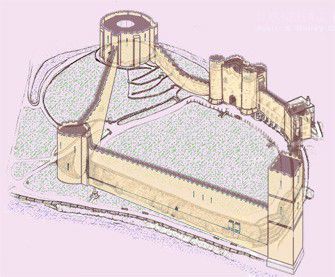
The Castle as it might have looked in the 13th Century. Today only the Gatehouse remains. Sydney Simmons of the Tonbridge Historical Society
The chancel was enlarged in the 13th Century to form the body of the church we know today. The nave was extended and the squat tower built. The next major building project took place in the 14th Century, when the side chapel of St Nicholas was added. This meant that by the 15th Century the church was much larger, with a north and, later, a south aisle added and the tower extended. Such a growth in building reflects the growth of Tonbridge and the peoples continued use of this church.
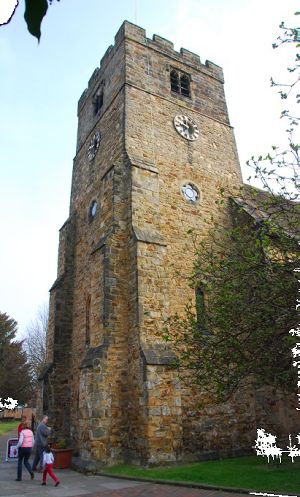
The distinctive Norman Tower of our own church. This originally ended just above the clock, and was fur-ther extended in the 15th Century, leaving a marked difference in the brickwork.
In testament to the importance and size of the Norman town, Tonbridge also established its own monastery, where the present railway car park is.
The Priory of St Mary Magdalene was founded by Richard de Clare of Tonbridge Castle in 1124 and the Black Canons who lived there became regular preachers in Tonbridge and elsewhere.
The 16th Century Reformation
A major change came in 1536. Until this point our church had been Roman Catholic, as all churches were. It is believed that there was a small chapel to the Virgin Mary where the organ now stands. However, as Cardinal Wolsey began to look at church reform, Tonbridge was visited by the King's Commissioners who were sent across the country by Henry VIII to enquire into the monetary value of churches and monasteries.
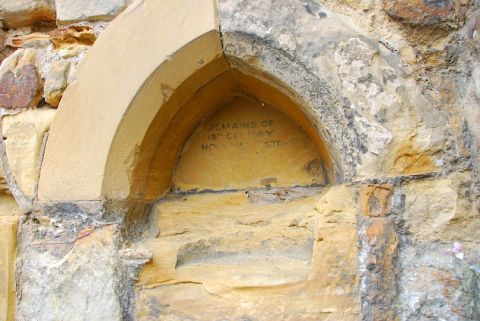
As part of this reform images and statues of saints were destroyed. In our own church this would have included the chapel to the Virgin Mary, St Nicholas and the images of St Peter and St Paul. We know of these from the will of William Hykeman, who in 1441 left 4 pence for them to be painted. By the main door to our church you will find the remains of a water stoup and in the chapel of St Nicholas you will find the remains of a piscina which were also destroyed.
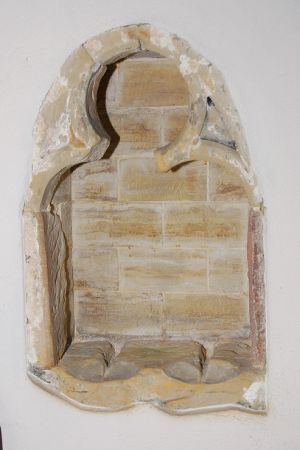
These would have been filled with holy or blessed water, and people coming to worship would dip their finger in the water stoup and then make a sign of the cross to prepare themselves for entering God's house. The piscina was used by the priest, who washed his hands in holy water before administering Mass. These were practices that were deemed unnecessary by the Protestant reformers. This movement sought to simplify Church practices and rituals which had become barriers to the word and spirit of God. Anything which did not worship God or facilitate understanding of Him was deemed unnecessary.
Tonbridge Priory was an early victim and the doors were closed for the last time on 8th February 1525. The people of Tonbridge had not watched this process with indifference but had written to the Archbishop of Canterbury in 1523. Cardinal Wolsey, Lord Chancellor and Henry VIII?s most trusted advisor, was instrumental in this process. In an attempt to smooth the process he offered to establish a grammar school in Tonbridge, to replace the loss of the Priory. Tonbridge had to choose between a "free grammar school at Tonbridge for 40 scholars....or else to have the continuance of the Priory there as it hath been in time past."
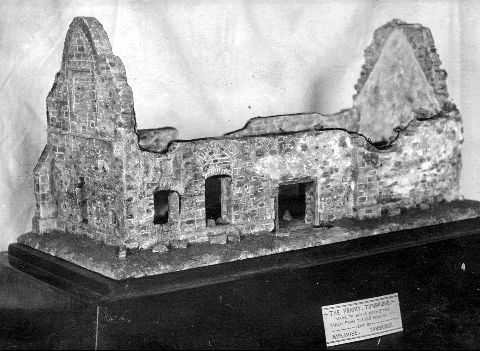
Tonbridge Priory
Despite their choice of the Priory, the doors were closed. The prom-ised grammar school was never built and the money raised was taken to build Cardinal College, now Christ Church, Oxford.
Wolsey died in 1530, aged 60, while awaiting trial for treason, having lost favour with Henry VIII. It is recorded that in the last days of his life he remorsefully reflected (29 November 1530) that "If I had served my God as diligently as I did my king, He would not have given me over in my grey hairs."
It was Sir Andrew Judd, a local Tonbridge man, who provided the Grammar School, which came to be known as Tonbridge School, in 1553. The school still has the motto, 'Deus Dat Incrementum' (God Gives Growth), which comes from Paul's first letter to the Corinthians, where he writes that it is 'only God, who makes things grow.'; (1 Corinthians 3:7). From its foundation to the building of its own chapel in 1850, boys crossed the road for Sunday Worship in our Church. Such was their attendance that in 1663 a special gallery had to be built to accommodate them.
As the turbulent relationship between the Crown and religious reform continued, Tonbridge also experienced its first persecutions. In 1555 Margery Polley, a Protestant widow from Pembury, was convicted of heresy and burnt at the stake. A memo-rial to her can be found by Natwest Bank in the High Street, in the form of a water trough. Joan Beach, another Tonbridge widow was condemned and killed in 1556, this time in Rochester.
This was one of the most turbulent times for the Church when beliefs were in question and actions often reflected power rather than prayerful piety. It is a part of our national and local history that we need to remember with regret. But despite our regret at the violent methods, we also need to remember the good we have inherited from this period.
The Reformation brought us the Bible in our own language, opening the word of God to every-one. It is because of this return to the word of God as the centre of Worship that we have Bibles in the pews today. The legacy of the Refor-mation has shaped many present practices in our church, from our liturgy to our belief that all are welcome in this place.
The 17th Century
During the 1600s Tonbridge continued to grow as an important town and trade centre and attracted many visitors who were on their way to Tunbridge Wells. This spa town began to develop from 1606, and became hugely popular after King Charles I himself went to 'take the waters' in 1630.
However, it wasn't until the 1670s that permanent guest houses were built. Visitors therefore stayed in Southborough or Tonbridge. We know of one sad service our church had to perform during this time. In the church porch there is a memorial to Philadelphia Lyttelton, a grand-daughter of the Earl of Monmouth, who was lady in waiting to Queen Catherine, wife of Charles II. She died of a burning fever on a trip to the spa at Tunbridge Wells. It seems to have been far from a rejuvenating visit, be-cause in the sanctuary is a memorial to George Baker, another royal attendant who probably died on the same visit as both memorials are dated 1663.
The 18th Century
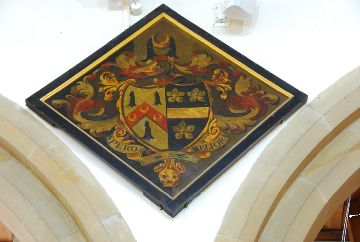
Hatchment for Thomas Harvey who died in 1779.
This century saw a general decline in the Church of England so little was done to develop the building. Main additions included the organ and the fashion for Hatchments. These diamond shaped frames were carried at funerals and are now displayed above the pillars of our church. They bear the coat of arms of many Tonbridge families and a guide to them can be found in the church. As the Jacobite rebellions began many churches also began displaying the King's coat of arms – George I's can be seen above the balcony at the back of the church. It is also a declaration of religious allegiance, as George I was a Protestant. (George was King from 1714-1727).
Although they do not have a hatchment, one very important Georgian Tonbridge family was the Austens. The novelist Jane Austen's grandfather is buried in St Nicholas' Chapel as are other members of her family. Her father is on the Baptismal register of this, his Parish Church, and Tonbridge had an important part to play in Jane Austen's own story. You can discover the exciting and little known story of Jane Austen and Tonbridge in the separate guidebook and audio tour.
The church was a central part of the town at this time; the town fire engine was kept in the church porch from 1747. All that remains of it are the two fire hooks, which meet over the door to the foyer. These considerable hooks were fastened to horses and used to pull burning thatch off roofs. Their position in our porch reminds us that people from the town meet under one roof in the church, with one common aim.
There are other signs of the church's concern for its community: the churchwardens' accounts record money being spent on work "att ye Necessary house in ye Churchyard" and in 1775 we are told "paid for an umbrello 2-2-0," presumably to help see members of the congregation to their carriages on wet Sundays. Greater sums of money were spent on eight new bells in 1774. These were transported by barge from London and a Richard Larkin was paid 8 shillings "for drawing ye 8 bells from ye wharfe to the Steple." The bells were recast in 1897 and still ring today, calling people to worship. Each bell has its own inscription, including 'To honour both our God and King, Our voices shall in concert ring'(3rd) and 'Ye people all who hear me ring, Be faithful to your God and King' (7th).
The 19th Century
This Victorian era was one of restoration and rebuilding for our church. In 1820 the nave roof was reduced, a new gallery added on the south side and box pews installed. They didn't last long, and were removed in 1877, in a second wave of renovations, which also removed the galleries and gave us our present pulpit (a gift from Mrs Deacon).
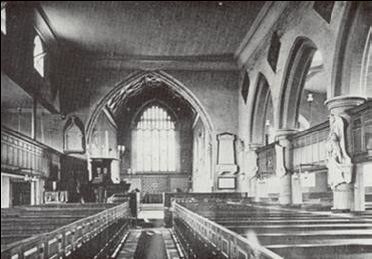
Our church in the Victorian era, with box pews, a plain East Window and the galleries where Jane Austen's father would have sat as a Tonbridge School boy
The nave and south aisle were rebuilt and a new font (now in the churchyard) was installed. These renova-tions were the work of Ewan Christian, a famous Victorian architect, who later built the National Portrait Gallery. But his main work was ecclesiastical, with Carlisle Cathedral and Christ Church, Spitalfields among the many he worked on.
In the midst of all these renovations the Headmaster of Tonbridge School saw fit to claim the old font, which he used as a bird bath. Despite the request for its return to three successive headmasters, it was not until a lay headmaster arrived in 1930 that the font was returned to us.
The organ was rebuilt and moved from the back of the church to its present position, although it was not electrified until 1906. Until then two men were necessary „for blowing? or hand-pumping to supply enough air for the notes to sound!
These were significant changes to the building, but the work of the church continued to be interwoven with that of the community. The Vestry Minutes record vouchers being given to paupers to buy shoes in 1825, appointing a master of the workhouse in Bank Street and payments to nurses to care for illegitimate children. In the 1890s the district nurse, Nurse Raysby, was employed by the Parish Church. She held clinics from 9am-2pm on weekdays, free of charge, and when she appealed for various items her needs were met by church mem-bers. Her services were clearly greatly appreci-ated, for the Tonbridge and Sevenoaks Standard records a presentation in 1892.
'A number of friends assembled to witness a pleasing presentation to Nurse Raysby by the Vicar on behalf of 43 poor women whom she had attended in times of sickness, who, by a spontaneous feeling of gratitude, had determined to show their appreciation of the care and kindness of the nurse in their hour of trial and affliction. The presentation consisted of a handsome silver mounted umbrella.'
We do not have a district nurse operating from the Parish now, but a parallel can be drawn with our Pastoral Assistants. These are trained members of our congregation who visit the ill, the lonely and the bereaved to offer comfort and prayerful support. In this way we still seek to draw alongside people in their times of 'trial and affliction', as Nurse Raysby did.
The 20th Century
The beginning of this century saw the sad addition of our war memorials in the side chapel and on the south wall. Here we remember the people of Tonbridge who gave their lives that we may live in freedom. Our church holds an annual service of remembrance in their memory and for those who are recently bereaved.
These memorials, however, were not the only addi-tion to our building. After the austerity of war, the St Nicholas chapel (pictured) was restored in 1952 and in 1954 the magnificent East Window was installed.
